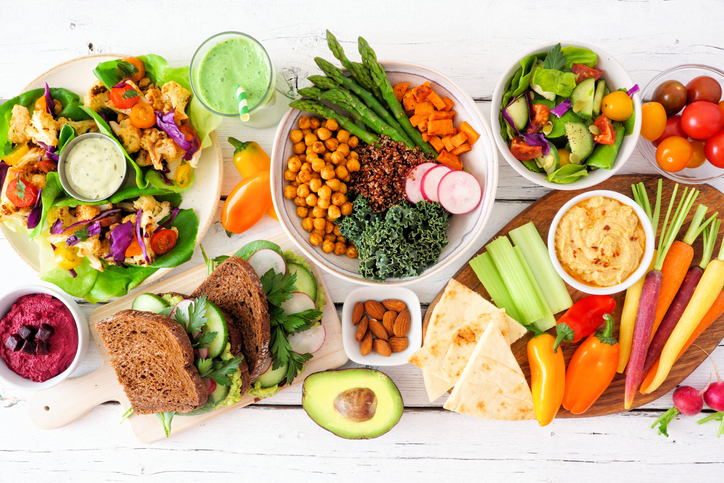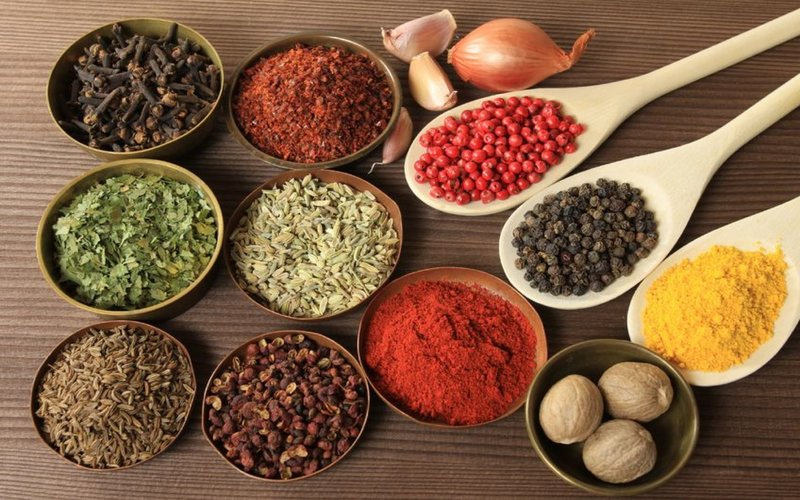Hey there, fellow seekers of wellness and balance! 😊
Today, we’re delving into the harmonious relationship between our bodies and the foods we consume.
Ayurveda isn’t just about what we eat; it’s a deep understanding of how the foods we choose can either nourish us or throw our delicate balance out of sync. It’s like composing a beautiful melody with the ingredients at hand, ensuring each note (or ingredient) contributes to the symphony (your overall well-being).
So, picture this: You’re standing in your kitchen, ready to create a meal that not only tantalizes your taste buds but also aligns with your body’s unique needs. But before we dive into culinary adventure, there’s something important to discuss—Ayurvedic food combinations, specifically those to avoid.
In this blog post, it’s my pleasure to be your guide. Together, we’ll explore the wisdom of Ayurveda and uncover the dos and don’ts of food pairing. It’s not about imposing restrictions; it’s about empowering you with knowledge on how to harmonize your favorite ingredients while keeping your digestive fire (Agni) content and your doshas (Vata, Pitta, and Kapha) in harmony.
So, grab a comfortable spot and embark on this culinary exploration. We’ll unravel the art of Ayurvedic food pairings, uncover the food combinations that might not be the best for your well-being, and learn the secrets of spicing up your meals the Ayurvedic way. I promise, that by the end of this journey, your taste buds and your tummy will thank you for the wisdom gained.
Are you ready to dive into the world of Ayurvedic food harmony? Let’s begin!
Section 1: Ayurvedic Principles
Doshas (Body Constitutions)
In our journey through the wisdom of Ayurveda, let’s begin by exploring a fundamental concept: the doshas. Think of doshas as the unique blueprints that define our physical and mental constitution. Just as we are all one-of-a-kind individuals, our dosha constitution is equally unique.
Here’s the beauty of it: Ayurveda recognizes three primary doshas—Vata, Pitta, and Kapha. Each dosha carries its own set of characteristics, tendencies, and preferences. And here’s the intriguing part—we all have a combination of these doshas, but one or two typically dominate, creating our distinct mind-body profile.
Let’s take a moment to get to know these doshas a bit better:
- Vata: Imagine Vata as the energy of movement—light, airy, and enthusiastic. When in balance, Vata individuals are creative, quick thinkers, and full of vitality. However, excess Vata can lead to restlessness and anxiety.
- Pitta: Pitta, on the other hand, is like the fire within us—intense, focused, and determined. In balance, Pitta types are sharp-minded, with excellent digestion and energy. But too much Pitta can lead to irritability and inflammation.
- Kapha: Kapha embodies stability and nurturing qualities—grounded, patient, and caring. Balanced Kapha individuals are strong, with great endurance and a calm demeanor. When Kapha is excessive, it may lead to sluggishness and weight gain.
Here’s the fascinating part: Ayurveda teaches us that our dosha constitution not only influences our physical traits but also our dietary and lifestyle choices. So, understanding your dominant dosha can help you make food choices that align with your unique constitution.
The Importance of Agni (Digestive Fire)
Now, let’s talk about something you might not have considered while enjoying your favorite meals—your digestive fire, or as Ayurveda calls it, “Agni.”
Think of Agni as the fiery engine within your belly, tirelessly working to break down the foods you consume and extract the nutrients your body craves. It’s your inner chef, transforming complex dishes into the simpler elements your body can absorb and use.
Imagine sitting down to a hearty meal. Your digestive system kicks into action, just like a well-choreographed dance. The stomach acids rise, enzymes are released, and the process of digestion begins. This perfectly orchestrated performance is what ensures that the food you eat nourishes you effectively.
Now, here’s the crucial part: Agni isn’t just responsible for digestion; it also plays a pivotal role in maintaining your overall health. When Agni is balanced and robust, it ensures efficient digestion, boosts metabolism, and promotes vitality. But when it’s weakened or imbalanced, it can lead to digestive discomfort, nutrient malabsorption, and even a sense of sluggishness.
Ayurveda places significant emphasis on nurturing and maintaining Agni for optimal well-being. And one of the key ways to support your Agni is by making mindful choices about what you eat and how you combine your foods.
By avoiding incompatible food combinations, you’re not only preventing digestive disturbances but also helping your Agni function at its best. Picture it as a gesture of gratitude toward your body—saying, “Thank you, Agni, for being my inner chef and keeping me nourished!”
As we continue our Ayurvedic journey, you’ll discover why certain food combinations can be like putting a wrench in Agni’s well-oiled machine and how making the right choices can keep your digestive fire burning bright.
Section 2: Food Combinations
Compatible Food Pairings
Now that we’ve dipped our toes into the world of Ayurveda, it’s time to explore the art of harmonious food pairings. Ayurveda teaches us that some foods naturally complement each other, enhancing digestion and overall well-being. It’s like finding the perfect partner for a dance—you both move in sync, creating a beautiful rhythm.
1. Grains with Vegetables: Think of grains (like rice or quinoa) and vegetables as the dynamic duo of balanced nutrition. These combinations provide essential carbohydrates, fiber, and a plethora of vitamins and minerals. Together, they create a satisfying and nourishing meal that supports your digestive system and keeps your energy levels stable.
2. Fruits on Their Own: Ayurveda suggests that fruits are best enjoyed alone and not combined with other foods. This allows your body to quickly absorb the natural sugars and nutrients from fruits without causing digestive disturbances. When you have a craving for that juicy apple or a bowl of berries, savor them as a stand-alone snack.
3. Legumes with Grains: Combining legumes (like lentils or beans) with grains is a classic example of Ayurvedic wisdom. These combinations offer a complete source of plant-based protein, making them ideal for those following a vegetarian or vegan diet. The synergy between legumes and grains supports balanced nutrition and provides a steady release of energy throughout the day.
4. Ghee with Everything: Ghee, or clarified butter, holds a cherished place in Ayurveda. It enhances the flavors of your meals while promoting easy digestion. Feel free to drizzle a bit of ghee on your grains, vegetables, or legumes to create a harmonious and flavorful experience.
5. Spices as Digestive Aids: Don’t forget the spices! Spices like cumin, coriander, and fennel are Ayurveda’s secret weapons for enhancing digestion. Incorporating these spices into your meals can help balance your doshas and keep your digestive fire (Agni) burning strong.
By embracing these compatible food pairings, you’re not just crafting delicious meals; you’re also nurturing your body in a way that aligns with the wisdom of Ayurveda. It’s about creating a culinary symphony that leaves you feeling nourished and in perfect harmony.
Wrong Food Combinations to Avoid
Wrong food combinations are the culinary “oops” moments we all encounter from time to time, often unknowingly, but they can significantly impact our digestion and well-being. So, let’s shine a light on these less-than-ideal food pairings.
1. Milk and Sour Fruits: Ayurveda suggests that mixing milk and sour fruits is a recipe for digestive distress. The acidity of sour fruits curdles the milk in your stomach, potentially leading to bloating, gas, and discomfort. This combination can also disrupt the balance of doshas, particularly Pitta dosha, leading to an imbalance in the body’s internal harmony. It’s best to enjoy milk and fruits separately or opt for sweet fruits when having milk-based drinks.
2. Honey and Ghee: Individually, honey and ghee (clarified butter) offer numerous health benefits. Honey is known for its antibacterial properties, while ghee is prized for its digestive and healing qualities. However, combining them creates a toxic substance known as “ama” in Ayurveda. This can clog your channels, weaken digestion, and hinder your body’s ability to absorb nutrients. In essence, it neutralizes the positive effects of both. To enjoy the benefits of honey and ghee, keep them separate and use them individually in your diet.
3. Fish and Dairy: While both fish and dairy are nutritious on their own, Ayurveda advises against pairing them. This combination is believed to be incompatible because the properties of fish and dairy are quite different. Fish tends to be heating and light, while dairy is cooling and heavy. When they come together, it can create an imbalance in the body and lead to digestive disturbances. If you love both, consider enjoying them at separate meals to optimize digestion.
4. Fruits with Meals: It might seem like a healthy choice to enjoy fruits immediately after a meal, but Ayurveda recommends otherwise. Fruits digest quickly, often within 30 minutes, while other foods take longer. When combined, fruits may sit in the stomach, ferment, and lead to digestive discomfort. This can result in the formation of toxins (ama) and hinder the digestive process. To savor fruits’ benefits, eat them separately or as a snack between meals.
These are just a few examples of food combinations that Ayurveda suggests avoiding. The underlying principle is to support the efficient functioning of Agni, your digestive fire. When we mix incompatible foods, Agni’s delicate balance can be disrupted, potentially leading to indigestion, sluggishness, and imbalances in the doshas.
But fear not! Ayurveda also offers solutions and strategies to mitigate the effects of these food combinations. We’ll explore these remedies later in the post, so stay tuned.
Section 3: The Role of Ayurvedic Spices
When it comes to Ayurveda, spices are like the magical keys that unlock the full potential of your meals. They not only add flavor but also offer numerous health benefits. Let’s take a closer look at how Ayurvedic spices play a pivotal role in mitigating the effects of wrong food combinations:
Cumin (Jeera)
Cumin, with its earthy and slightly nutty flavor, is a fantastic spice to aid digestion. It’s known for its ability to kindle the digestive fire (Agni), making it an excellent choice when you’ve indulged in a meal with potentially incompatible combinations. Sprinkle some roasted cumin seeds on your dishes or include it in your spice blends to support digestion.
Coriander (Dhania)
Coriander is a versatile spice used extensively in Ayurvedic cooking. It’s not only flavorful but also has cooling properties that can help balance excess heat caused by spicy or incompatible food combinations. You can use coriander seeds or fresh coriander leaves in your cooking to add a refreshing touch to your meals.
Fennel (Saunf)
Fennel seeds are like nature’s digestive aid. They help ease bloating, gas, and indigestion—common discomforts that may arise after consuming incompatible food combinations. A cup of fennel tea post-meal can work wonders in soothing your digestive system and promoting overall well-being.
Ginger (Adrak)
Ginger is a superstar in Ayurveda due to its digestive and anti-inflammatory properties. It’s especially useful when you’ve had a meal that doesn’t quite agree with your system. A cup of ginger tea or a dash of fresh ginger in your dishes can help alleviate digestive discomfort and promote healthy digestion.
Turmeric (Haldi)
Turmeric, known for its vibrant color and healing properties, can also aid in digestion. Its anti-inflammatory and antioxidant qualities make it an excellent addition to your meals, especially if you’ve consumed foods that could potentially cause inflammation in your digestive system.
By incorporating these Ayurvedic spices into your cooking, you can enhance the flavor of your meals while also supporting your digestive system. Remember, it’s not just about what you eat, but also how you prepare and combine these ingredients that contribute to your overall well-being.
Section 4: Tips for Balancing Food Combinations
Personalized Ayurvedic Assessments
Now that you’ve gained valuable insights into Ayurvedic food combinations and their significance, you might be wondering how to apply this wisdom to your own life. The good news is, that you can take an initial step toward personalized Ayurvedic guidance right here, right now, all on your own.
Imagine this as a personal journey of self-discovery. By understanding your unique constitution (Prakriti) and any imbalances (Vikriti) you might have, you can make informed choices that align with your body’s needs and promote overall well-being.
So, how can you begin this journey of self-assessment? Here’s a simple yet effective way:
1. Take a Dosha Quiz:
A Dosha Quiz is like a mirror that reflects your predominant dosha or dosha combination—Vata, Pitta, or Kapha. It’s a user-friendly tool designed to help you gain insights into your Ayurvedic constitution.
I’ve prepared a Dosha Quiz just for you, which you can find here- Dosha Quiz. This quiz consists of a series of questions about your physical traits, preferences, and tendencies. Based on your responses, it will provide you with a basic understanding of your dosha profile.
2. Explore Your Dosha Insights:
Once you’ve completed the quiz, you’ll receive insights into your dominant dosha(s). You can learn about the qualities and characteristics associated with your dosha, as well as dietary and lifestyle recommendations that can help keep it in balance.
3. Embrace Self-Awareness:
Remember that self-awareness is a powerful tool in Ayurveda. Pay attention to how different foods and daily habits make you feel. Be mindful of any imbalances you may experience and how they relate to your dosha.
While the Dosha Quiz provides valuable self-assessment, it’s essential to acknowledge that Ayurveda’s depth goes beyond a simple quiz. For a more comprehensive and personalized plan, consulting with a qualified Ayurvedic practitioner is highly recommended. They can provide a deeper understanding of your unique constitution and address specific health concerns.
Your Ayurvedic journey is all about finding balance and well-being that resonate with you. So, whether you’re starting with a Dosha Quiz or seeking professional guidance, remember that each step you take brings you closer to a healthier, harmonious you.
Mindful Eating Habits
Ok, we’ve explored the art of Ayurvedic food combinations and learned about the do’s and don’ts, now it’s time to shift our focus to mindful eating. Think of it as the final flourish to your culinary masterpiece—a way to fully savor the flavors and nourishment your meal provides.
So, what’s mindful eating all about? It’s about bringing your full presence to the dining table, allowing each bite to be a conscious experience. Here’s how we can make this practice a part of our daily lives:
1. Slow Down: In our fast-paced world, it’s easy to rush through meals. But Ayurveda encourages us to savor each bite. Put down your phone, turn off the TV, and enjoy the moment.
2. Engage Your Senses: Before you take a bite, pause for a moment. Observe the colors, textures, and aromas of your food. Engage your senses fully.
3. Chew Mindfully: Digestion begins in the mouth. Chew your food thoroughly; it’s the first step in breaking down what you eat.
4. Be Present: Make mealtime a sacred space. Focus on the food in front of you, the company you’re sharing it with, or simply the quiet moment of solitude.
5. Listen to Your Body: Pay attention to your body’s cues. Are you truly hungry, or is it just habit? Stop eating when you’re satisfied, not when you’re full.
6. Gratitude: Before you begin your meal, take a moment to express gratitude for the nourishment you’re about to receive.
7. Stay Calm: Eating in a relaxed, stress-free environment allows your body to digest more efficiently. Avoid stressful conversations or situations during meals.
8. Hydration: Sipping warm water or herbal teas during your meal can aid digestion, but avoid icy beverages, which can dampen your digestive fire.
By practicing mindful eating, you not only enhance your digestive process but also cultivate a deeper connection with your food. This simple shift in awareness can lead to a more profound sense of well-being.
Remember, Ayurveda isn’t just about what you eat; it’s also about how you eat. So, as you embark on your Ayurvedic journey, embrace mindful eating as a way to fully savor the goodness on your plate and nourish both body and soul.
Conclusion
As our journey through Ayurvedic wisdom comes to a close, I hope you’ve found valuable insights that will not only transform your meals but also your well-being. It’s been an enlightening exploration of the art of food pairing—a conversation between you, your body, and the ancient wisdom of Ayurveda.
Remember, Ayurveda isn’t about rigid rules or restrictions; it’s about aligning with your body’s needs and nourishing your unique constitution. By avoiding the wrong food combinations, you’re taking a significant step towards a more harmonious and balanced life.
But our journey doesn’t end here. As you embark on your Ayurvedic culinary adventure, keep in mind that this is a path of continuous learning and self-discovery. Explore, experiment, and let your intuition be your guide. And if you ever find yourself uncertain, consider consulting with an Ayurvedic practitioner who can provide personalized guidance tailored to your constitution.
By embracing Ayurveda’s wisdom, you’re nurturing not only your body but also your connection to the world around you. Every meal becomes an opportunity to harmonize, balance, and thrive. It’s a journey of self-care and self-discovery, and it’s one that I’m honored to share with you.
Before we part ways, I’m excited to share a special opportunity with you. If our journey through Ayurveda has sparked your curiosity and left you hungry for more wisdom, I invite you to explore my “Ayurveda For Beginners Series.”
In this series, I’ve delved deep into the world of Ayurveda, one dosha at a time, offering personalized insights and practices tailored to your unique constitution. Whether you resonate with Vata, Pitta, or Kapha, this series is designed to empower you on your path to well-being.
To kickstart your journey, here’s a sneak peek of what’s to come:
Thank you for joining me on this enlightening voyage through Ayurveda. May your meals be filled with balance, harmony, and the vibrant energy of well-being.
Until our next exploration, take good care, my friend! 🌱








This is a very good introduction to The subject I believe the combinations makes sense and I am already feeling a difference in my body . The book is very easy to understand and user friendly I enjoyed it very much as I do all of your books A+ five stars a fantastic read